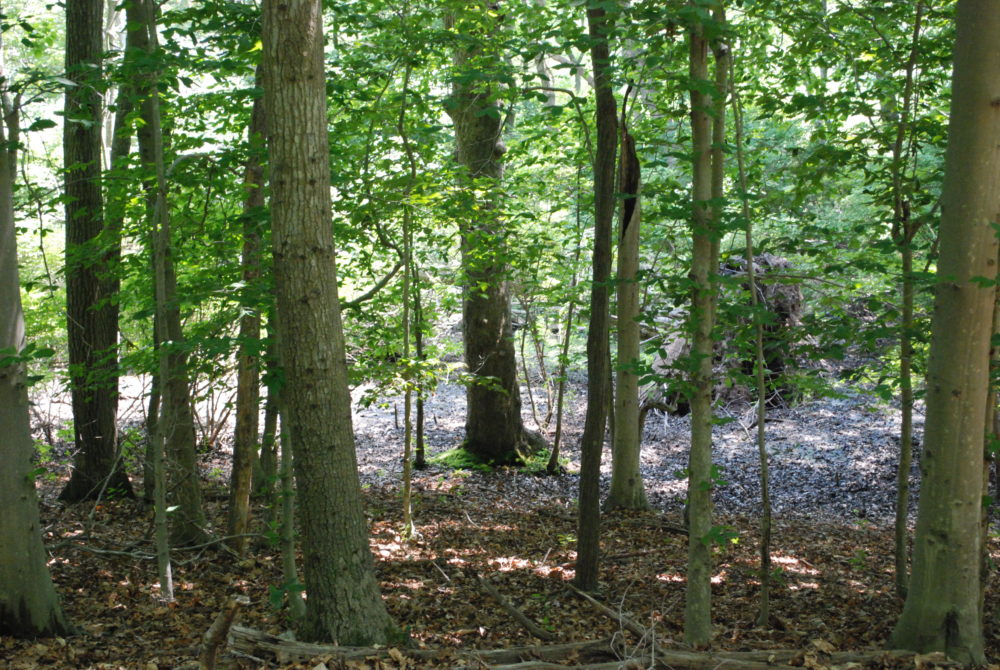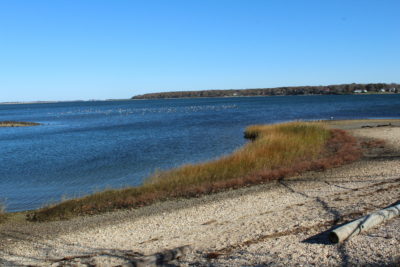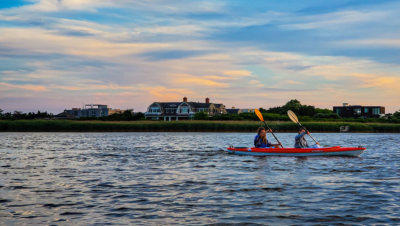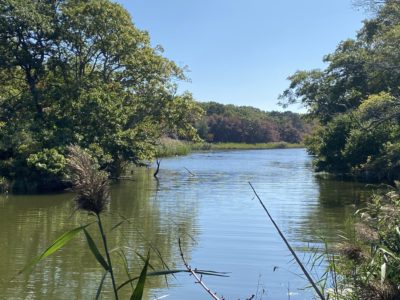Our Work / Stewardship
Green Initiatives
photo by Jeff Heatley
Peconic Land Trust’s values and goals reflect our organization’s desire to protect our environment and appreciate our natural resources. Over the years we have taken steps to minimize our carbon footprint by making our offices more efficient and by integrating “green principles” throughout the organization. We aim to continue making a difference by providing resources to the public and to the land trust community about the positive effects that land preservation has on climate change.
The good news is that our existing core values and strategic goals already reflect the current trends toward “Going Green.”
About
We've spent time looking at our internal operations, and seeing where small changes could make an impact. Here are some of the things we are doing to go Green throughout our organization:
Operations:
- Purchasing hybrid vehicles in 2007 and again in 2016, the Trust is cutting gas consumption in half.
- Net-metered solar photovoltaic array installed at North Fork Stewardship Center and our Main Office in Southampton.
- Anticipated solar installations at stewardship sites.
- Annual analysis of baseline energy cost and consumption.
- Upgrading antiquated septic systems to advanced Nitrogen Reducing Biofilters (NRBs) or constructed wetlands, in partnership with Stony Brook's Center for Cleanwater Technology at several of our staff housing sites, with additional upgrades anticipated.
- Implementation of cloud-based and paperless technologies in the office and in the field, to reduce waste and our carbon footprint.
- Installation of a new water filtration system in our office to reduce the use of single-use water bottles.
Agriculture, Farming, Gardening:
- Utilization of cover crops to promote soil health and reduce soil erosion.
- Working closely with partners like Cornell Cooperative Extension and Suffolk County Soil and Water Conservation District to support programs that promote and incentivize the use of best management practices for soil health, responsible resource management and improved natural habitat.
- Maintain community gardens at The Agricultural Center at Charnews Farm and Bridge Gardens providing space for community members to grow their own produce for at-home consumption, thus reducing their carbon footprint.
- Employ low-impact, sustainable lawn practices at Bridge Gardens.
- Offer lawn care advice to homeowners and landscapers through partnerships with Perfect Earth Project, Cornell Cooperative Extension and Peconic Estuary Program
- Maintain a demonstration vegetable garden at Bridge Gardens, with the produce donated to the Sag Harbor Food pantry.
Water Quality:
- Promote better water quality in natural wetlands through conservation and restoration projects. A few recent examples: Broad Cove, Forge River, Widow's Hole Preserve, North Menantic Preserve, and Georgica Pond Preserve.
- Partner on water quality research projects with the Noank Aquaculture Cooperative, National Grid Foundation and Cornell Cooperative Extension of Suffolk County through our Shellfisher Preserve and the Peconic Pearls program.
- Regional Aquifer Protection Land Acquisition Program created to acquire land or development rights for surface water quality, groundwater recharge areas, and drinking water protection.
- Partnerships with Stony Brook University, Center for Clean Water Technology, and Perfect Earth to improve the water quality of the Sagg Pond Watershed and the Georgica Pond Watershed.
Habitat Restoration:
- Installation and maintenance of pollinator habitat at several preserves, including Georgica Pond Preserve, Cove Hollow Farm Preserve, and Wolf Preserve.
- Removal of invasive species at select sites.
- Native plantings at several preserves to increase biodiversity and increase sources of food and shelter for native fauna.
- Utilization of permeable materials, like wood chips and crushed local stone, to create trails and parking areas on our stewardship sites and preserves.
- Installation of living shorelines at several sites, including Forge River Preserve and Widow's Hole Preserve.
Tips from our Partners
Tips from our partners at the Peconic Estuary Program:
- Eliminate or reduce fertilizer and pesticide use by planting native wildflowers, grasses, and trees.
- Use natural cleaning products in the home, yard and on the boat.
- Bring old medications to local police stations for proper disposal.
- Stay off beach dunes and fenced-off areas, remove trash and clean up pet waste.
- Store hazardous products in spill proof containers. Dispose of old products on STOP collection days.

Tips from our friends at the Perfect Earth Project on Lawn Care
- Soil. The foundation for plant health, strong deep roots and nutrient uptake. Chemicals kill the natural immune systems that occur in soil. Healthy soil contains organisms that fight lawn and landscape pests, eliminating the need for continual toxic pesticide treatments.
- Water. Overwatering promotes shallow rooting, fungus diseases, mosquitoes, and nutrient run off. Do not start watering in early summer until the weather is truly dry. Monitor your irrigation settings: water infrequently and deeply. Once, or maybe twice a week for at least an hour is generally adequate.
- Mowing. Mow high: 3-4". Longer leaf blades collect more sun, provide more energy to roots and shade out weeds. Mow often: remove no more than 1/3 of a leaf blade at a time. Mow sharp: dull mower blades tear grass which invites fungus infections. Leave clippings: grass clippings return nutrients to the soil.
- Aeration. Aerate annually, more often in high traffic areas. Aeration reduces compaction and encourages better drainage and incorporation of nutrients.
- Fertilization. Feed lawns in early fall only. Spring fertilization encourages fast, weak growth and invites disease problems in hot weather. Use compost or slow-release, organic fertilizer. Slow release fertilizers feed your lawn continuously over the course of the growing season, eliminating the peaks and valleys of chemical fertilization. They are also less likely to run off, reducing the risk for watershed pollution.
- Overseeding. Rake and over seed in fall when grass seed germinates best and weed seeds are dormant. Grass will then out-compete weeds in the spring.
- Diversity. Clover fixes nitrogen (natural fertilizer) and fills gaps in lawns. Dandelions are excellent aerators and are soon overwhelmed by the healthy turf they pioneered.
- Be Patient. Most good things take time, and a healthy, pest resistant lawn is no different. By making your lawn accustomed to gradual, rather than rapid change, you produce a balanced ecosystem that is resilient to environmental stresses around it.
Paul Wagner of Greener Pastures Organics and Garden Director Rick Bogusch provide helpful videos on how to care for your lawn and landscape on our page, Lawn & Landscaping Advice from Bridge Gardens.
Paul will also answer your questions by email at LawnExpert@PeconicLandTrust.org




